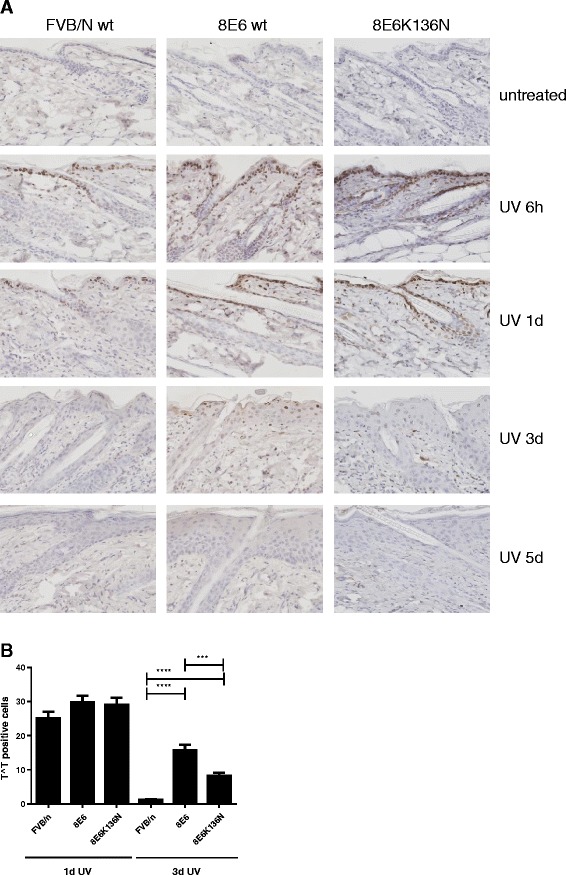Fig. 3.

Persistence of DNA damage in UVB treated skin of K14-HPV8-E6 mice. a Paraffin embedded skin sections of UV treated skin from FVB/n-wt, K14-HPV8-E6wt and K14-HPV8-E6K136N mice were stained for T^T (magnification: 400×). Representative images of n = 4 skin biopsies per time-point per mouse line are shown. b T^T positive cells were quantified by counting positive cells per 3 fields of n = 4 animals per mouse line and time-point. At day 1 after UV treatment, no significant difference in the number of T^T positive cells were observed (FVB/n-wt vs. K14-HPV8-E6wt, p = 0.1094; FVB/n-wt vs. K14-HPV8-E6-K136N, p = 0.1769; K14-HPV8-E6wt vs. K14-HPV8-E6-K136N, p = 0.8115). Three days after treatment significantly more T^T positive cells persisted in the skin of K14-HPV8-E6wt mice (FVB/n-wt vs. K14-HPV8-E6wt, ****, p < 0.0001; FVB/n-wt vs. K14-HPV8-E6-K136N, ****, p < 0.0001; K14-HPV8-E6wt vs. K14-HPV8-E6-K136N, ***, p = 0.0003). Data are presented as mean ± SEM
